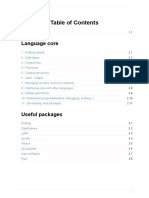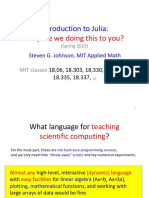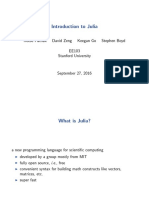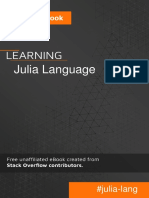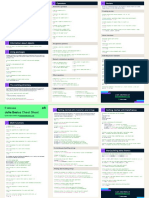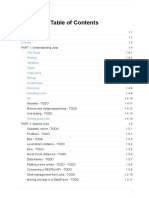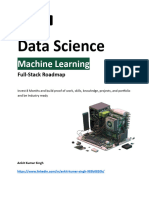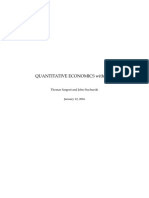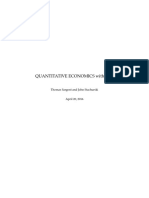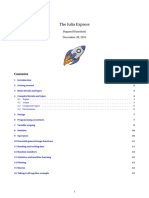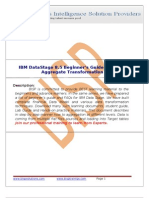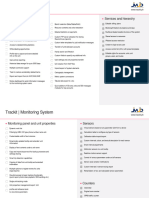How to Learn Julia – A Roadmap for Data Engineers & BI Developers
Julia is a high-performance language that’s great for data science, numerical
computing, and automation. Given your SQL, Python, and BI experience, you’ll find Julia
easy to learn with the right approach.
Step 1: Install & Set Up Julia
Download Julia → https://julialang.org/downloads/
Install VS Code + Julia Extension (Best IDE for Julia)
Try Julia REPL (Interactive shell for quick testing)
julia> println("Hello, Julia!")
Use Jupyter Notebook (via IJulia package)
Step 2: Learn Basic Syntax (Compared to Python & SQL)
Since you know Python, Julia feels similar but faster:
Variables & Data Types
x = 10 # Integer
y = 3.14 # Float
name = "Junaid" # String
Functions
function square(n)
return n * n
end
square(4) # 16
OR
square(n) = n * n
Loops & Conditionals
for i in 1:5
� println(i)
end
Resource: Official Julia Docs
Mini-Exercise: Write a function that takes a number and returns "Even" or "Odd".
Step 3: Data Structures in Julia
Arrays (Like Python Lists, but Faster!)
numbers = [1, 2, 3, 4, 5]
push!(numbers, 6) # Append 6
Dictionaries (Like Python Dicts)
person = Dict("Name" => "Junaid", "Age" => 41)
Tuples & Named Tuples
tup = (10, 20, 30)
named_tup = (name="Ali", age=30)
Mini-Exercise: Create a dictionary for an invoice with amount, date, and status.
Step 4: Data Analysis & SQL in Julia
Since you work with SQL and Power BI, focus on:
Working with DataFrames (DataFrames.jl)
using DataFrames
df = DataFrame(Name=["Ali", "Sara"], Age=[30, 25])
println(df)
Querying SQL Databases (LibPQ.jl for PostgreSQL, ODBC.jl for other DBs)
using ODBC
�conn = ODBC.Connection("DSN=mydb")
df = DataFrame(ODBC.query(conn, "SELECT * FROM customers"))
Resource: DataFrames.jl Docs
Mini-Project: Load an SQL table into Julia, filter the data, and export it to Excel.
Step 5: Data Visualization in Julia (Plots.jl)
Julia has powerful visualization tools:
Install & Use Plots.jl
using Plots
x = 1:10
y = x .^ 2 # Squaring each element
plot(x, y, label="x^2")
Bar Chart Example
bar(["A", "B", "C"], [10, 20, 15])
Resource: Plots.jl Docs
Mini-Project: Plot sales trends for a dataset.
Step 6: Performance Optimization (Why Julia is So Fast)
Unlike Python, Julia is compiled, so it’s much faster.
Avoid Global Variables
Use Type Annotations for Speed
function add_numbers(a::Int, b::Int)::Int
return a + b
end
� Use Multithreading for ETL Jobs
Threads.@threads for i in 1:100
println(i)
end
Resource: Performance Tips
Mini-Project: Parallelize a large CSV processing task.
Step 7: Real-World Applications Based on Your Work
Given your ETL & BI background, use Julia for:
Automating Reports → Process & clean SQL data, export to Excel
ETL Pipelines → Load, transform, and store structured data
Connecting to APIs → Fetch financial data for analysis
Forecasting & Analytics → Use StatsModels.jl for predictive models
Final Project:
• Fetch SQL data using ODBC.jl
• Perform data wrangling using DataFrames.jl
• Generate charts & reports with Plots.jl
• Save as Excel/CSV for Power BI
Step 8: Keep Practicing & Join the Julia Community
Resources:
Julia Academy (Free Courses)
JuliaLang Discourse (Community Forum)
Kaggle Datasets for Julia Practice
Final Thoughts:
�Since you already know Python, SQL, and BI tools, Julia will feel familiar but much
faster. Start with basic scripts, then data manipulation, and finally real-world
automation & ETL.
Would you like specific Julia project ideas or help setting up Julia with SQL databases?








